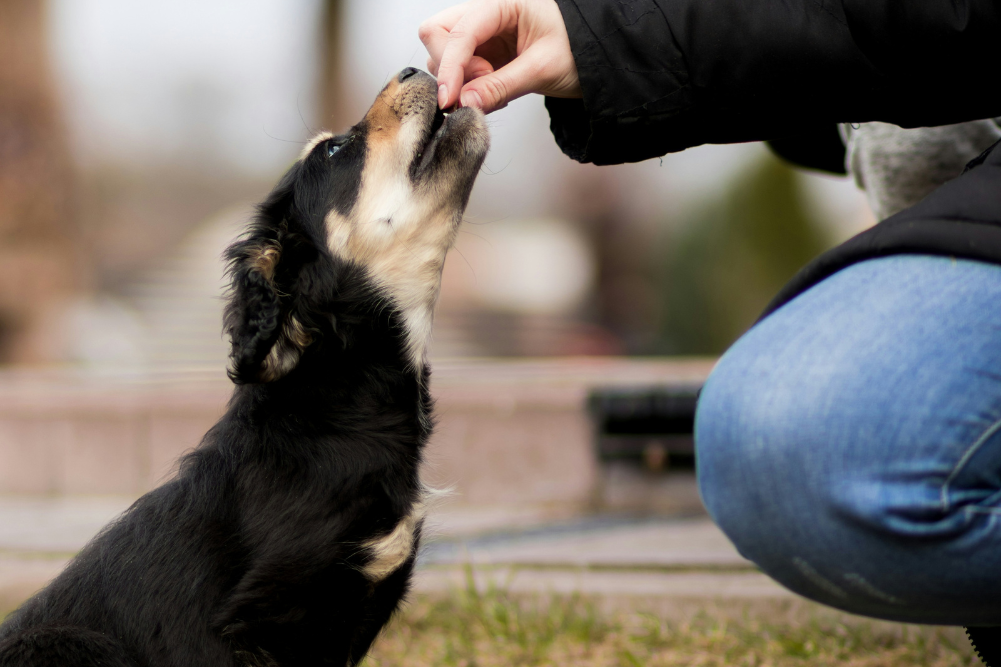Is your pet stressed?
Traditional Chinese medicine has recognised the importance of lifestyle and stress on wellness for thousands of years. More recently, conventional medicine has acknowledged this. At a recent conference on the causes of cancer in people, the speaker referred to a study that listed, in order of importance, the factors that may lead to carcinogenesis as: mental (mood and attitude); gamma ray exposure; x-ray exposure; UV radiation exposure; genetic factors, environment and lifestyle.
So how does mood affect health? The workings of the body are complex. A simplified version is this. When we sense danger, the adrenal glands release adrenaline and other hormones, which stimulate that part of our bodies required to respond to the danger. Oxygen-rich blood moves to the brain and muscles.
Other hormones reduce or shut down those parts of the body not required for the immediate flight or fight, eg the digestive system and the immune system.
Once the danger has passed, the body returns to a normal non-stressed state. However, if the perceived stress or danger persists, the effects on the body, and therefore the immune system, may also persist. In people, this may lead to sleeplessness, headaches, eating disorders, digestive disorders, lack of interest in normal activities, headaches or muscular pain, reliance on drugs or alcohol and mood swings.
The health of our pets may also be affected by stress and emotions. Some of the more common stress-induced illnesses veterinarians treat include lower urinary tract diseases in cats, painful acral lick granulomas in dogs, irritable bowel, hair pulling and over-grooming leading to moist, painful skin lesions in cats, and symptoms of cat flu in stressed boarding cats.
Stress contributes to behavioural disorders in dogs. Separation anxiety leads to barking, destructive behaviour and escaping. Fear and lack of leadership can lead to aggressive behaviour. In cats, anxiety causes inappropriate toileting behaviour and spraying or misdirected aggression between two cats who usually get on.
Behavioural and emotional problems in pets are complex and rarely is the solution simple. However, most will improve if we address four things: diet, environment, exercise (including training and specific behaviour modification) and relaxation.
Discuss a diet upgrade with your vet at the next annual check-up. A healthy diet is the one that results in ideal body condition, a healthy coat, clean, healthy teeth, plenty of energy and good bowels. If your pet has a health condition, such as allergies or liver or kidney disorders, they may need a more prescriptive approach to feeding, but this does not mean they cannot eat fresh foods. Dogs and cats can eat human (real) foods such as fresh meat, vegetables, essential oils (flax oil or fish oil), organ meat, some low-GI carbohydrates and a small amount of yoghurt. Ask your vet for specific homemade diet recipes. Homemade diets for cats MUST be correctly balanced.
If possible, include some raw meaty bones for dental health. Raw meaty bones can also be therapeutic. Have you ever watched your cat relish killing a chicken wing before taking it away into a dark den (under your furniture) and eating it? Be careful with dogs because the competition for resources sometimes results in aggression between two canine companions.
Think about the environment your pet lives in. Indoor cats require plenty of variety: climbing apparatus, places to hide, both high and low surfaces to rest on, some sturdy scratching posts and plenty of litter trays (one per cat plus one). If you have two cats who do not get on, they may need time out. Often one cat is the aggressor, so the other less dominant cat may need a safe place where they are never disturbed. Sometimes, having a bell on the more aggressive cat can alert the less dominant one and give them time to get away.
Dogs need a safe den, either outside or inside, that is enclosed on three sides. They also need plenty of company and plenty of exercise, and working dogs need a job to do.
Even small pets suffer from stress. Pets such as birds, reptiles and fish all need housing that is as close to their natural environment as possible to reduce illness.
Exercise and training are essential. Encourage lazy cats to play for 10 minutes a day using torchlights or pegs tied to string. Dogs need daily exercise. Even old dogs benefit from regular short walks to prevent stiffness. If your dog is friendly, make use of off-leash exercise areas.
There is more to exercise than simply running after a ball, though. Most dogs, particularly working dogs in urban environments, need mental stimulation similar to that they were bred for. Since there aren’t many sheep in the city for rounding up, make use of agility clubs, or games such as fly-ball. (Have your dog physically checked before undertaking high-impact exercise.) Alternatively, a reputable dog trainer may be able to help you create an exercise plan that suits your dog.
Bach flower remedies can be used to aid relaxation in our pets. For anxious pets, a combination of Rescue Remedy, Mimulus (specific fear) and Aspen (general worry and anxiety) given orally every 15 minutes can help.
Tellington Touch can be used to relax and focus your pet. A simple method you can try is using ears: the base of the ear has numerous acupuncture points connecting with other parts of the body. This form of touch relieves stress, improves digestion and can help with travel sickness. You begin by holding the base of the ear and then you slide your hand to the tip of the ear, gently pulling as you go.
Massage is another technique you can use to help relax your pet. Massage may also be useful to relieve pain and improve mobility in dogs ands cats with spondylosis and arthritis. A simple massage is the “butterfly” massage. Begin with long, gentle strokes down the spine, from the base of the ears to the base of the tail. Extend these strokes over the shoulder and hips, alternating left and right, until you build up a rhythm. Then take your thumbs and make small circles on each side of the spine from under the ears, right down over the pelvis and to the tail.
Your holistic vet may be able to assist with acupuncture or herbs to assist relaxation in your pet.
Finally, try to look after yourself, and address your own stress and anxiety. In doing so you will be in a better place to help your canine or feline companion address theirs.








